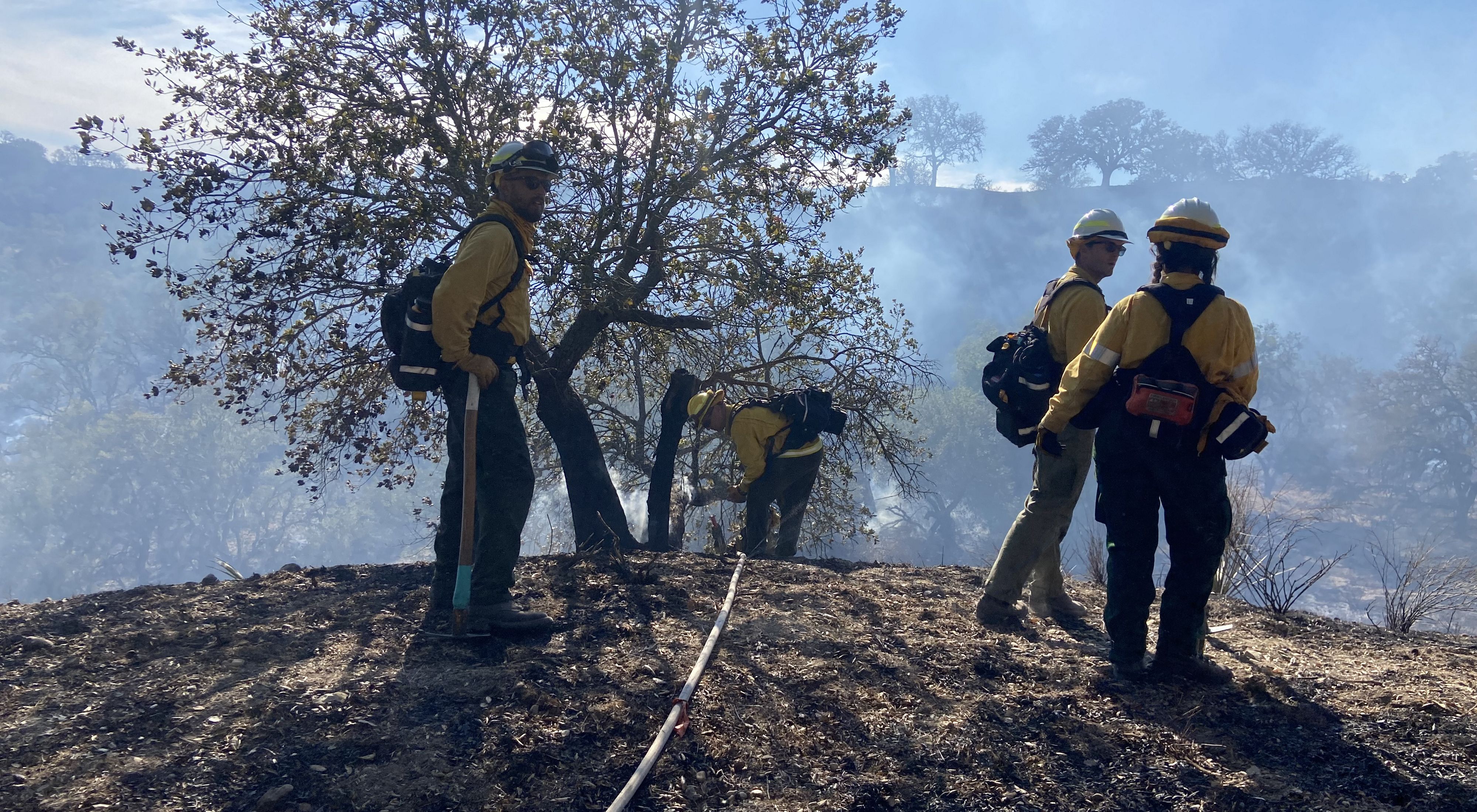Fire Practitioners and Researchers Team Up to Learn About “Good Fire” at UCSB Sedgwick Reserve November 11th – 18th
Media Contacts
-
Armin Mahramzadeh
Media Contact
The Nature Conservancy
Email: a.mahramzadeh@tnc.org -
Heather Constable
Director, UC Sedgwick Reserve
Phone: (805) 951-0022
Email: hconstable@ucsb.edu
Firefighters, “firelighters”, and researchers have been working together for the last year to prepare to conduct a prescribed fire in Santa Barbara County. Thanks to a collaboration between local prescribed fire practitioners, local researchers, and the greater Santa Barbara "Good Fire" community, approximately 50 acres of UCSB Sedgwick Reserve will have beneficial fire returned to its lands through the Prescribed Fire Training Exchange (TREX) from November 11-18th.
As interest in the use of controlled burning both as a land management tool and to support biodiversity increases, so does the need for trained fire practitioners. Prescribed Fire Training Exchanges (TREX) were introduced in 2013 by The Nature Conservancy (TNC) in partnership with the US Forest Service to provide workforce training and experiential learning on the equipment, safety, orienteering and emergency response required for prescribed burns. For the Sedgwick Reserve burn, TNC has offered a number of scholarships to support the participation of Indigenous and cultural practitioners. Along with multiple prescribed burns, the weeklong program will include lectures and seminars on the fire ecology of local plant and animal species, tribal burning and burn planning led by both TNC Fire Management and Santa Barbara County Fire Department.
This controlled burn is being conducted to provide an opportunity to “learn and burn” together, reduce fire risk and understand the ecological effects of fire on the landscape under controlled conditions. Prescribed burns often occur at lower fire intensities and allows for the installation of instrumentation, pre-burn and post-burn comparisons and continuous monitoring of the recovering habitat. Researchers from UCSB, and Santa Barbara County Fire will focus on fuels and fire behavior, oak and coastal sage scrub fire ecology, meteorology, ecohydrology and wildlife activity and abundance. Researchers from SDSU and NASA will compare high spectral photography from manned planes and LIDAR data from drones with fuel moisture readings on the ground.
UCSB Sedgwick Reserve is a field station protecting 6,000 acres of natural lands as part of the statewide UC Natural Reserve System. In partnership with The Nature Conservancy’s Jack and Laura Dangermond Preserve, Sedgwick Reserve and the La Kretz Center for Research at Sedgwick Reserve hosted a successful TREX and prescribed burn of 8 acres of oak woodland in 2022 after nine months of cross-organizational and cooperative planning. This year’s burn will be conducted on approximately 50 acres of predominantly oak woodland, grassland and a small component of coastal sage scrub. Researchers will study the impact of prescribed fire on these vegetation types while supporting additional research, education and land stewardship goals.
Sedgwick Reserve often serves as a hub for educational collaborations. This fall’s TREX event is no exception, as participants include employees of the University of California, Santa Barbara Natural Reserve System, Cal Poly San Luis Obispo’s Fuels Management Training Program, University of California Agriculture and Natural Resources (ANR), The Nature Conservancy, The Nature Conservancy’s Jack and Laura Dangermond Preserve, San Diego State University, the National Aeronautics and Space Administration, Santa Barbara County Fire Department, Santa Barbara County Fire Safe Council and Santa Barbara Air Pollution Control District.
The Nature Conservancy is a global conservation organization dedicated to conserving the lands and waters on which all life depends. Guided by science, we create innovative, on-the-ground solutions to our world’s toughest challenges so that nature and people can thrive together. We are tackling climate change, conserving lands, waters and oceans at an unprecedented scale, providing food and water sustainably and helping make cities more sustainable. The Nature Conservancy is working to make a lasting difference around the world in 81 countries and territories (40 by direct conservation impact and 41 through partners) through a collaborative approach that engages local communities, governments, the private sector, and other partners. To learn more, visit nature.org or follow @nature_press on X.
